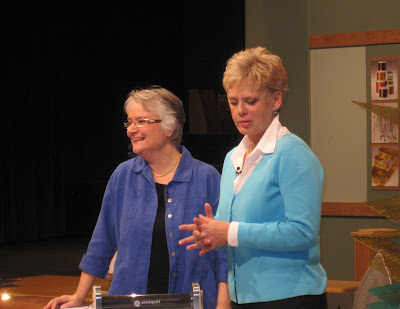We have one more give away this week and then the final give away - a copy of my book on January 31. I hope you are enjoying all this talk about dyeing fabric.
Things to keep in mind and have and when dyeing in this manner:
1. Best to do this outside on a sunny day, if possible
2. Have a hose available to rinse the platters
3. Have Styrofam platters covered in plastic
4. 12 squirt bottles
5. Several yards of fabric pre-soaked in sodium carbonate water and wrung out in your washing machine on spin and set aside in a plastic wash tub.
 I mix up my dyes and then make my gradations in each of the separate squirt bottles. You can use any of the gradations you like or all of them if you have enough squirt bottles. I suggest you try one 12 step gradation at a time. I like to label all my squirt bottles so I know what color is in each one. It is hard to tell the color just by looking at the bottle. I just use numbers 1-12, but you can also put the name of the color for instance- Yellow/orange - on the bottle if you like that better. Refer to the dye chart or your color wheel. These will rub off over time, but just remark them. Then I begin to play.
I mix up my dyes and then make my gradations in each of the separate squirt bottles. You can use any of the gradations you like or all of them if you have enough squirt bottles. I suggest you try one 12 step gradation at a time. I like to label all my squirt bottles so I know what color is in each one. It is hard to tell the color just by looking at the bottle. I just use numbers 1-12, but you can also put the name of the color for instance- Yellow/orange - on the bottle if you like that better. Refer to the dye chart or your color wheel. These will rub off over time, but just remark them. Then I begin to play.
Adding resists
After you have applied the color, you can lay things on top of the dyed fabric to act as a resist in the sun. Try all kinds of objects. Here is a list of things to start with:
- Rice or heavy grains
- Rock salt or DekaSILK salt (see Resources, page XX)
- Rocks of all sizes
- Coins of all sizes
- Washers and nuts and bolts from the hardware store
- Any flat or heavy found objects
- Scissors
- Pliers
- Glasses
- Bottles
- Marbles


Anything that will lay flat and has some weight to it can be tried as a resist. Rummage around the house to find stuff and give it a try. You can also use rock salt or DekaSILK salt on top of the wet fabric. Once you place the salt on the wet fabric, squirt it with water to get all the salt wet, then let it dry. The salt will act as a resist and send the color shooting out like stars.
Method 2: Stand and pour
Another method to try with these light weight platters is to drip the dye down the length of the fabric. This is referred to as “Stand and Pour,” or drip dyeing. [Place a length of presoaked wrung out fabric on the platter. Lean the platter up against something so that it stands at an 85 degree angle. Start at the top end of the fabric and, using your squirt bottles with dye color in them, squirt dye on the fabric. The dye will drip and blend down to the bottom of the fabric. You will get some wonderful landscape and sky looking fabrics using this method. If you do this inside, place the platter inside a larger plastic container to catch the dripped dye. It is also advisable to place a piece of fabric in the bottom of this container to catch the excess dye. This makes another type of mystery fabric.


I’ll bet you can hardly wait for summer to try some of these.
You can get all this information and more in my book Fabric to Dye For.
 This quilt was inspired by the poppies that grow in my garden.
This quilt was inspired by the poppies that grow in my garden.













































